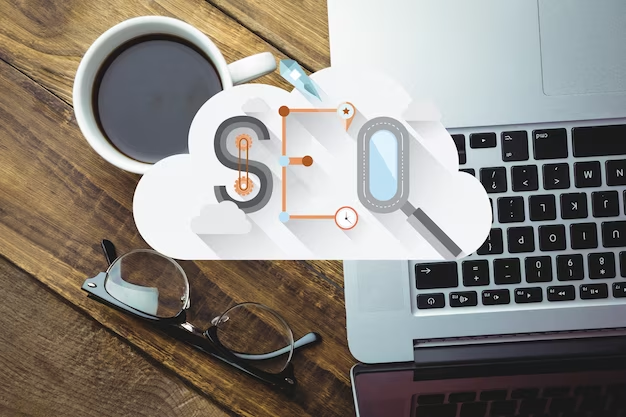In the realm of digital marketing, the difference between search engine marketing and search engine optimization can significantly impact a business’s online success. Both are essential components that serve different purposes under the broad umbrella of what is SEO and SEM in digital marketing.
SEO (Search Engine Optimization) is about enhancing a website to rank higher in search engine results organically, thereby increasing visibility without direct payment. In contrast, SEM (Search Engine Marketing) includes paid strategies, such as PPC (Pay-Per-Click) advertising, to increase a site’s visibility in SERPs. This article unpacks the nuances and uses of SEO and SEM, clearly delineating their roles and synergies in the digital marketing playbook.
The Basics of SEO
At its core, SEO is the process of optimizing a website to naturally improve its position in search engine rankings. It’s a multifaceted discipline that encompasses content creation, site architecture, and enhancing the technical aspects of a site to meet the criteria search engines use to rank web pages. As an integral aspect of search engine optimization and search engine marketing, SEO hinges on understanding algorithms and user behavior to organically position a website as an authoritative source within its niche.
- Keyword Optimization: This strategy involves carefully selecting and incorporating terms and phrases that align with what potential visitors are searching for.
- Content Quality: A fundamental trait for good SEO, content must be valuable, engaging, and crafted in a way that search engines can easily understand and rank.
Implementing effective SEO tactics lays the groundwork for a robust online presence, though it generally requires patience and persistence to reap the full benefits.
The Basics of SEM
Broadening the scope, SEM extends beyond organic strategies, embodying a range of paid techniques to maximize a website’s visibility. When discussing search engine marketing vs search engine optimization, it’s crucial to recognize that SEM primarily targets quick wins through advertising investments, allowing businesses to jump to the top of search results for selected keywords.
- Quick Traffic Surge: A significant advantage of SEM is the ability to garner a rapid influx of traffic through targeted ads.
- Pinpoint Audience Targeting: SEM offers tools to reach specific demographics, often yielding a higher chance of conversion due to the precision of its targeting methods.
Although SEM can quickly bolster traffic, it operates on a pay-to-play basis, requiring consistent budget allocation to maintain visibility.

Deep Dive into SEO
How SEO Works
To truly grasp how SEO enhances a website’s search presence, it’s important to delve into the mechanics that make it so powerful within the broader spectrum of search engine optimization and search engine marketing. Search engines deploy bots to crawl, understand, and index website content, assessing it according to criteria such as relevance, user experience, and external links.
- On-Page SEO: This pertains to the optimization of content and HTML elements according to best practices for higher rankings.
- Off-Page SEO: Crucial for establishing a site’s authority through links and social recognition.
- Technical SEO: Encompasses improvements in site infrastructure, like speed and responsiveness, to ensure seamless accessibility for both users and search engine crawlers.
Google’s algorithms particularly reward websites displaying Expertise, Authoritativeness, and Trustworthiness (E-A-T), making credible and well-written content a non-negotiable for SEO success.
Benefits of SEO
In examining the benefits of SEO in the context of search engine marketing vs search engine optimization, it becomes clear that SEO offers unique advantages:
- Cost-Effectiveness: SEO stands out as a cost-efficient method to drive organic traffic, an essential contrast within the broader context of search engine optimization and search engine marketing.
- Sustainable Visibility: Properly executed SEO strategies lead to enduring search rankings and consistent organic traffic.
- Enhanced Brand Trust: High organic rankings impart a sense of trust and authority to consumers, independently of SEM efforts.
Beyond transitory gains, SEO seeks to build a long-term foundation that enhances a website’s stature and discoverability on the internet.
SEO Strategies and Best Practices
| No. | SEO Strategy | Description |
|---|---|---|
| 1 | Quality Content | Create original, relevant, and valuable content to engage and retain users. |
| 2 | Keyword Research | Identify and target strategic keywords relevant to your target audience. |
| 3 | Mobile Optimization | Ensure a mobile-friendly website for increased rankings. |
| 4 | User Experience (UX) | Improve the overall user experience, including site speed and navigation. |
| 5 | Backlink Profile | Develop a strong profile of quality backlinks to enhance domain authority. |
Exploring SEM
How SEM Works
SEM is akin to a spotlight in the vast expanse of the internet, capable of highlighting a website instantly in search engine results. Its operation is fairly direct: advertisers set a budget, select keywords relevant to their products or services, and construct ads that appear to potential customers searching for those terms. Unlike the slow-burn effectiveness of SEO, SEM offers immediacy.
- Ad Platforms: SEM primarily uses platforms like Google Ads and Bing Ads, where businesses can create and optimize their ad campaigns.
- Auction-Based: Ads are served based on a real-time auction whenever a relevant query is entered, with visibility going to the highest bidder or the most relevant ad.
- Flexibility: SEM campaigns can be tweaked and adjusted rapidly in response to performance metrics, offering a dynamic approach to online marketing strategies.
Through its precise and flexible nature, SEM moves at the pace of business, addressing immediate needs and opportunities in the market.
Benefits of SEM
The benefits of SEM are predominantly aligned with speed and specificity:
- Rapid Results: Businesses can see a significant increase in traffic and potential conversions in a much shorter time compared to SEO.
- Market Testing: SEM allows for quick testing of market responses to new products or offers.
- Brand Awareness: Even if users don’t click on an ad, high visibility in search results can enhance brand recognition.
SEM’s real strength lies in its ability to generate immediate interest and direct responses to time-sensitive campaigns and offerings.
SEM Tactics and Strategies
To maximize SEM’s potential, a deliberate approach is essential. Here are some key tactics:
- Ad Copywriting: Crafting compelling and relevant ad copy is crucial for attracting clicks.
- Landing Page Optimization: Ensuring a seamless user experience from ad click to website conversion is vital for the success of SEM campaigns.

SEO vs SEM: Key Differences
Cost Implications
The cost dynamics between SEO and SEM are quite distinct. SEO involves upfront investment in website development and content creation but can lead to organic traffic without ongoing costs.
- Indirect Costs: SEO’s costs are usually time and labor spent optimizing the website.
- Direct Costs: SEM revolves around direct spending on ads, where businesses pay for each click on their ads.
Time for Results
Time is another clear divider when analyzing SEO versus SEM:
- SEO is a long-term strategy, requiring months of consistent effort to see significant results.
- SEM can produce traffic and leads as soon as the campaign is live, assuming the advertisements are well-targeted and funded.
Traffic Potential
While SEO and SEM both have the potential to increase website traffic, how they do so differs considerably:
- SEM offers swift and substantial traffic potential but is limited by budget constraints.
- SEO builds traffic organically, which grows and sustains itself over time if properly maintained.
Synergizing SEO and SEM
When to Use SEO vs SEM
Considering the attributes of SEO and SEM helps to determine their respective applications:
- SEO is best utilized for building a strong foundation and enhancing long-term visibility.
- SEM is more suitable for short-term objectives and reaching specific targets quickly.
Combining SEO and SEM for Maximum Impact
When SEO and SEM are synchronized effectively:
- They complement each other, providing both immediate and sustained visibility.
- Data from SEM can inform SEO strategies and vice-versa, creating a feedback loop that enhances both tactics.
- An integrated SEO and SEM strategy maximizes return on investment by ensuring a presence across varied stages of the customer journey, from awareness to conversion.

In a nutshell
Understanding and leveraging the differences and synergies between search engine optimization and search engine marketing is essential for any digital marketing strategy. SEO builds lasting results and enhances credibility, while SEM drives immediate traffic and quick wins. When utilized in harmony, these strategies can create a powerful combination that reaches customers at every stage of the buying process and maximizes online visibility for the long term.
FAQs
What is SEO mostly used for?
SEO is mostly used for improving a website’s organic ranking on search engine result pages, increasing visibility, driving organic traffic, and enhancing user engagement without the direct cost of advertising.
Can SEM exist without SEO?
Yes, SEM can exist without SEO, as it relies on paid advertising to attain visibility in search results. However, combining SEM with strong SEO practices can yield better results and improve the effectiveness of paid campaigns.
How quickly can I see results from SEM?
The results from SEM can be seen almost immediately after the campaign goes live. The extent of visibility and traffic, however, will depend on factors such as the competitiveness of the keywords, the effectiveness of the ad copy, and the allocated budget.
Is SEO or SEM more cost-effective in the long run?
SEO is generally considered more cost-effective in the long run as it provides sustainable organic visibility without ongoing costs per click. However, SEM can offer more predictable, controlled spending with potentially faster returns on investment.
How do I know if my business should focus more on SEO or SEM?
The focus on SEO versus SEM should be influenced by your business goals, budget, timeline, and competitive landscape. SEO is a better fit for long-term growth and building organic credibility, while SEM is ideal for immediate visibility and reaching specific targets quickly. Often, a combination of the two is the most effective approach.
